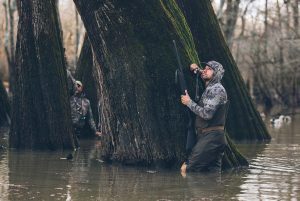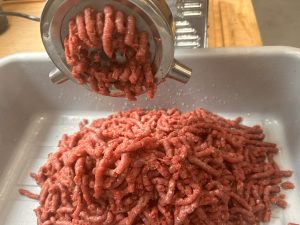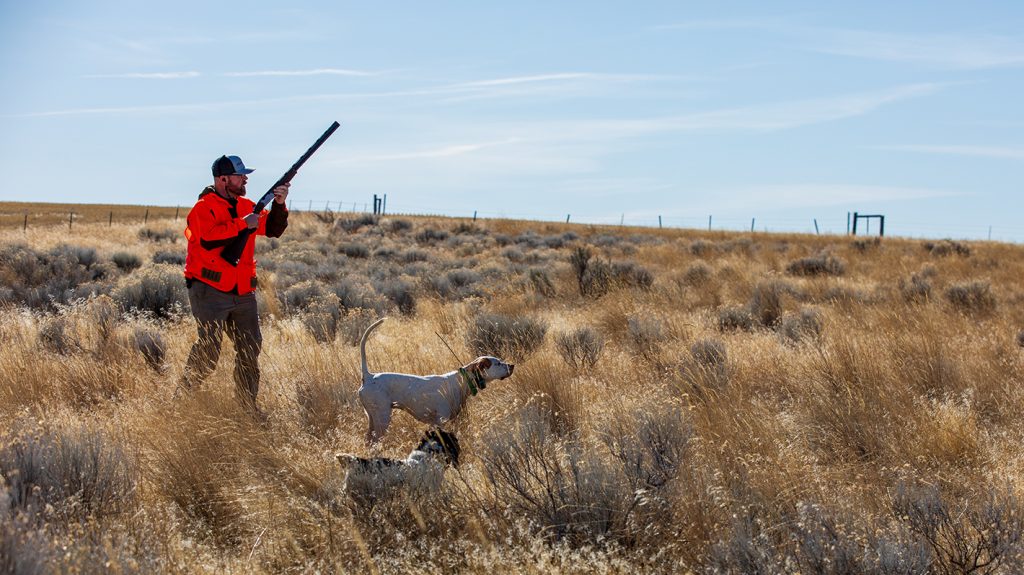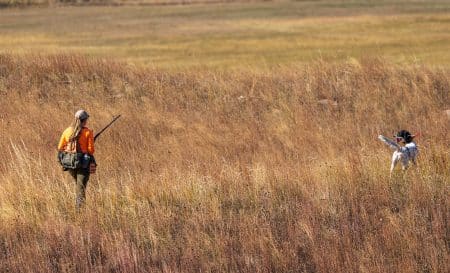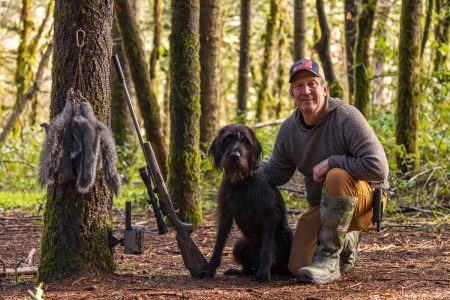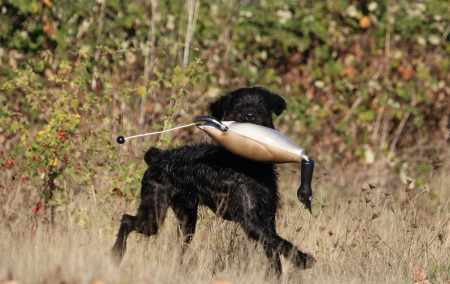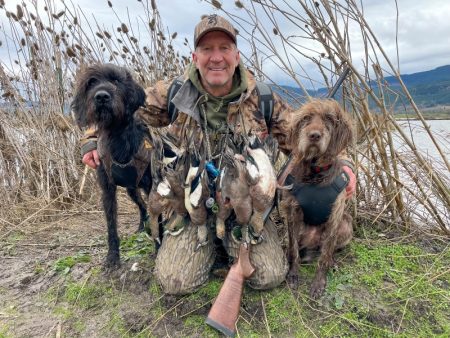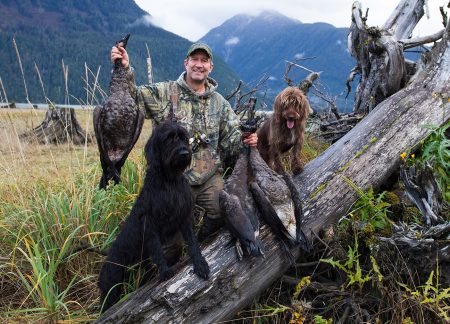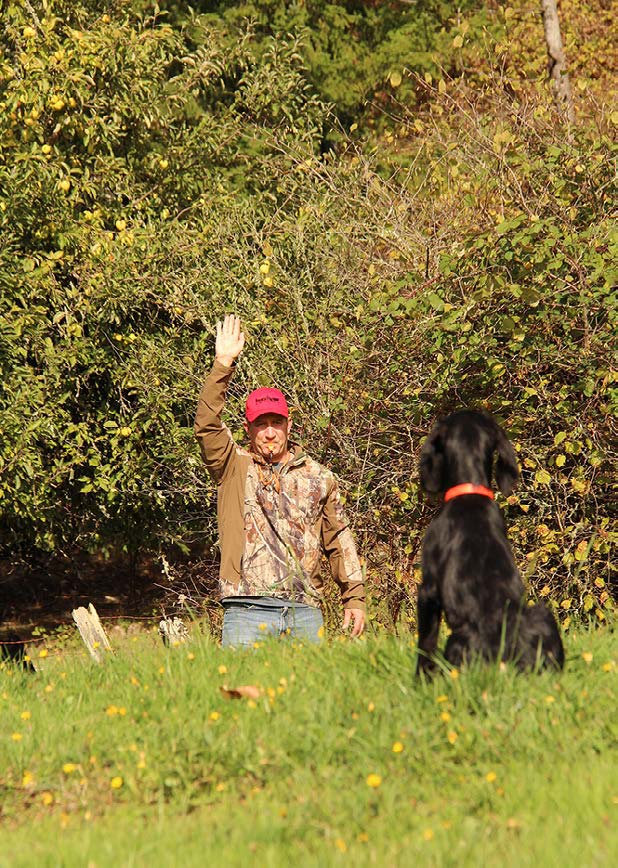Common Hunting Dog Training Challenges and How to Overcome Them
With hunting seasons wrapped up and spring on the horizon, now is the perfect time to focus on hunting dog training. Addressing unwanted behaviors early will ensure your pup performs better in the field next season. From curbing destructive habits to reinforcing obedience and retrieving skills, this guide covers practical solutions to common issues faced by gun dog owners. Consistency and clear communication are key to shaping a reliable hunting companion. Let’s dive into some real-life scenarios and remedies to help you and your dog succeed.
Issue: “Those dog beds are terrible. My dog chewed it up in less than a week!”
Remedy: No gun dog raised from a puppy should be allowed to chew on anything you don’t want it to. This blame is on the owner, not the dog. The problem with the dog chewing it’s bed is not the bed, but the owner’s inability to control the dog. The fact it carried on for over a week, is wrong. When a pup chews on anything you don’t want it to, immediately approach it with a harsh NO! command and remove the object or the dog. Give the dog a bone or chew to redirect the unwanted behavior. If the chewing persists, approach the dog with a harsh NO! command and swat its backside or the underside of the jaw. Never raise a hand to a dog and swat it in the face or from the top down, as it could lead to irreparable behavioral damage. An electronic collar will do the job if the commands don’t work. Dogs are quick learners, but unwanted behavior must be redirected quickly and sternly.
Issue: “Ever since she had a litter of pups, she’s not hunted the same.”
Remedy: That’s what a man shared whom I was on a duck hunt with. Over the course of the morning, three of us killed limits in a small creek, but the dog only retrieved three ducks. The dog was reluctant to swim, walk in the mud, or move through brush. The man said his vet checked the dog for hormone imbalances and overall health concerns and confirmed she was on a good diet. This dog was being lazy and just needed some direction and a boost of confidence. Instead of making excuses, babying the dog, and wanting to keep shooting ducks himself, the owner should have set down his gun and worked with his dog to get her fetching. Tossing a bird, short, for her to retrieve would have done it. The dog was controlling the owner, not the other way around, and at four years old, the Lab just needed to be encouraged and told what to do. Now that the season is over, wing training and regimented bumper training on land, then in water, will help fix things.
Issue: “He’s just a puppy having fun.”
Remedy: That’s what a man said to me in the parking lot as his dog ran over 100 yards away into a duck marsh. The pup chased up ducks, snipe, and songbirds and was clearly out of control. When walking from his blind to the truck, the man should have kept the six month old pup on a short leash and controlled it. When the pup finally returned, at it’s leisure, it wouldn’t obey a single command from its owner. Never take a break from training, and always direct the pup to sit, stay, and heal when it’s not doing what you want. You have to take control, and calming it down is the first step. Commands and training should occur at work and play. The owner must establish himself as the leader in order for his dog to know what it’s supposed to do, and for both of them to enjoy the experience.
Issue: “I like to let her run like that, it’s a good workout.”
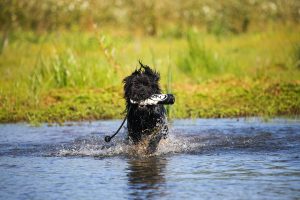
Remedy: It was early fall, and I was swimming my dogs in a canal for workout and retrieving training. The man approached us with his German Shorthaired Pointer. A few minutes prior I watched his dog run across a big farm field, chasing a flock of honkers, barking all the way. I asked him what happened back there. “Oh, that; I always let her chase birds; it’s good exercise.” When I told the man it was against the law to harass wildlife like that and that his dog was trespassing, I got his attention. And if he thought a short burst run was conditioning, he had a lot to learn. A long, steady run or swim is much better, and to get the most out of short-burst sprints, do it by throwing bumpers uphill where a dog can build strength in its back end. And to allow a dog to chase birds… what will it do come time for a hunt? Don’t be lazy, and don’t allow unwanted behaviors from your gun dog. You have to know and teach them the difference between right and wrong. In this scenario, the owner needed an education first.
Issue: “Down, get down! I hate it when he jumps up on strangers!”
Remedy: I watched a yellow lab jump up on his owner and lick his face. The owner knelt down and encouraged the behavior with smiles, laughter, and a warm greeting. As the passenger exited the truck, the dog did the same to them. That’s when the owner tried to make it stop. By encouraging the dog to jump up and lick the owner, it was being taught that such behavior is okay, but when it did it to someone else, it was told it was not okay. The owner needs to deliver consistent messages; otherwise, he and his dog will only be frustrated. The man must not let the dog jump on him when it’s excited, no exceptions.
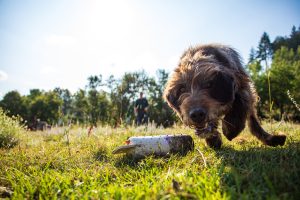
Now is the time to shape your dog into the best-behaved animal it can be. This begins with you knowing the difference between right and wrong, delivering clear and concise commands that confirm you’re in charge at all times, and communicating what’s right and wrong to your dog. When it comes to training a dog, consistency is the key.
See Scott Haugen’s other Hunting Dog Training Columns
About The Author: Scott Haugen is a full-time writer. See his basic puppy training videos at scotthaugen.com & follow him on Instagram & Facebook.
Per our affiliate disclosure, we may earn revenue from the products available on this page.


